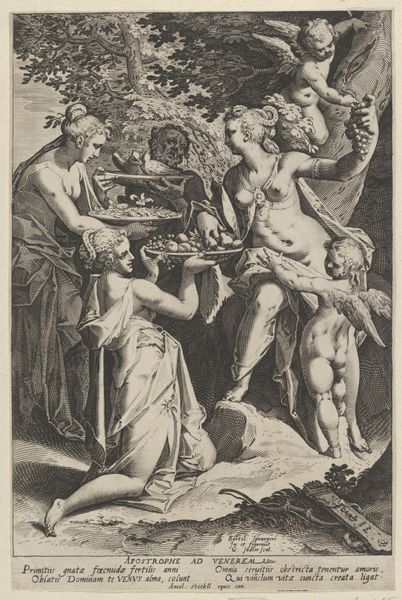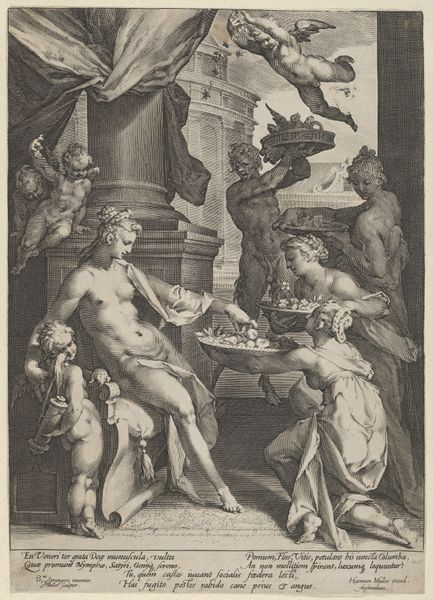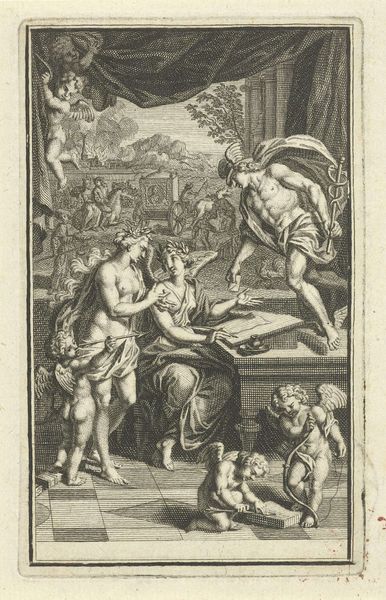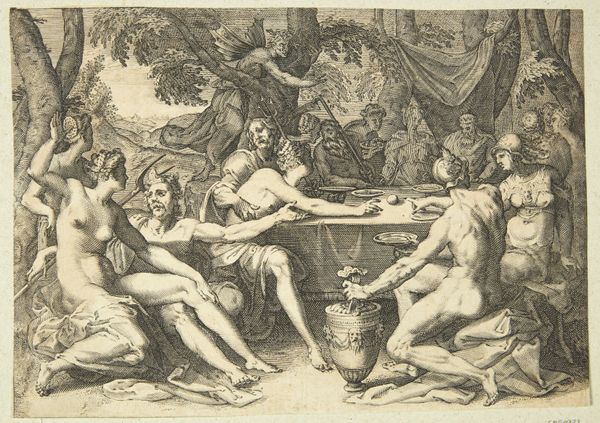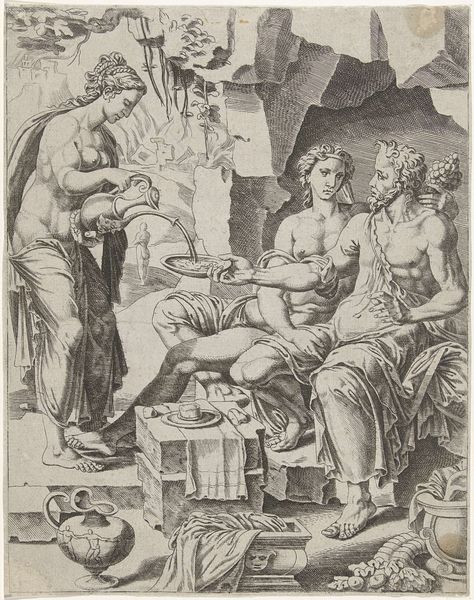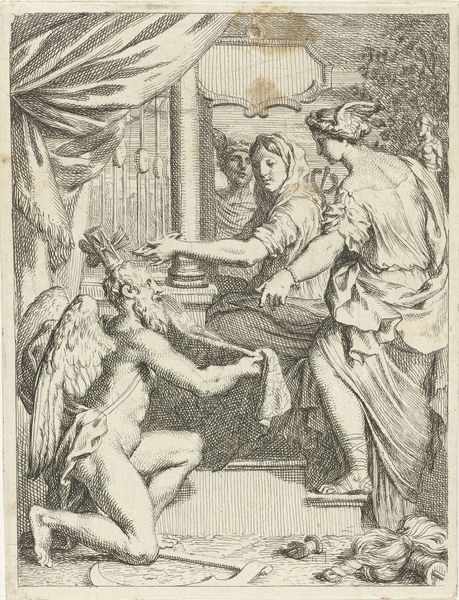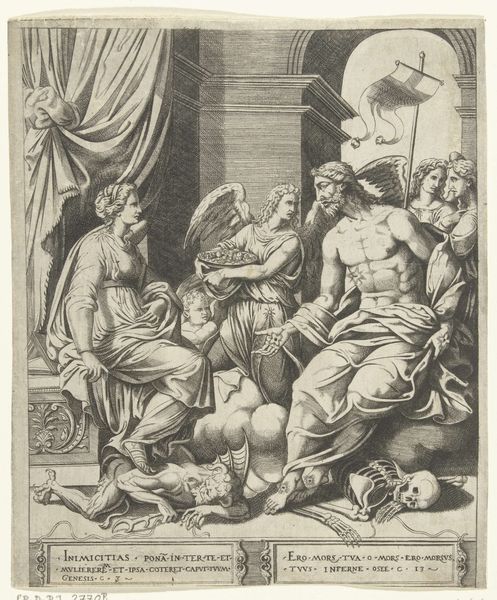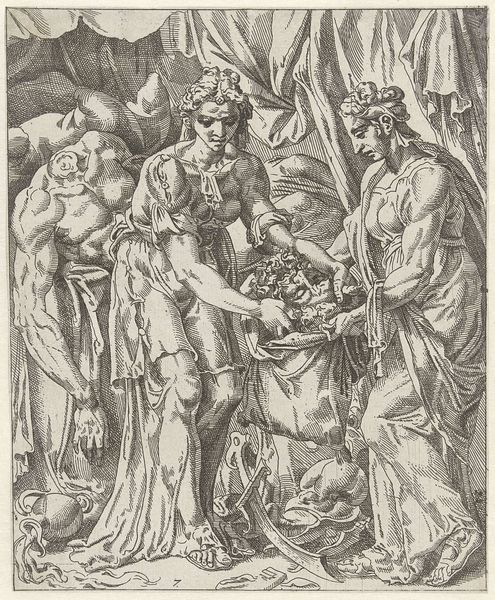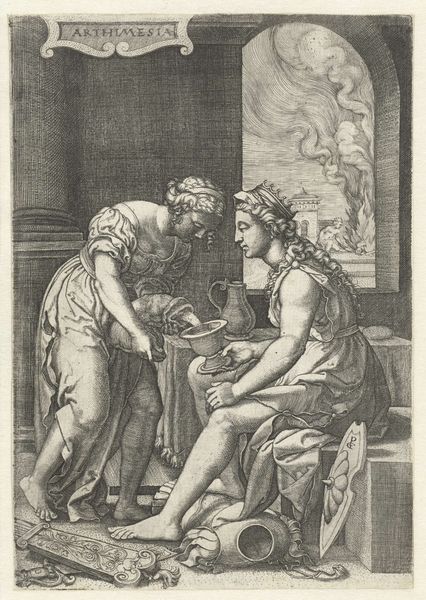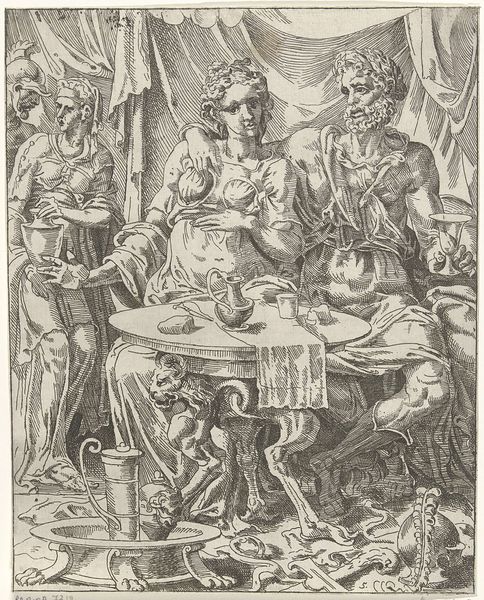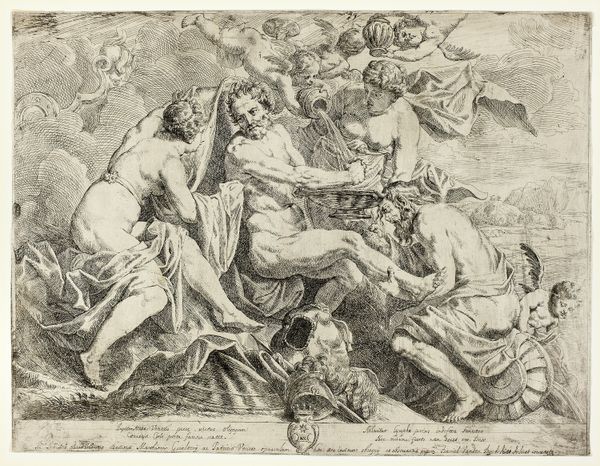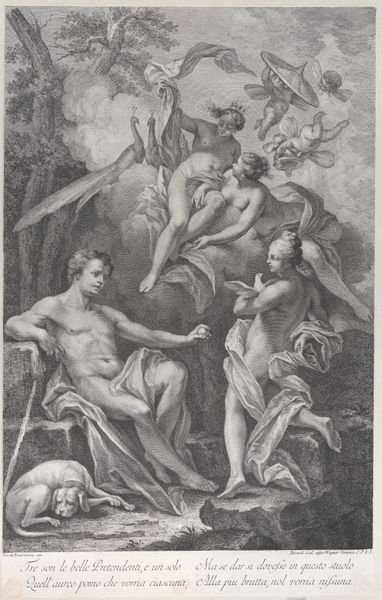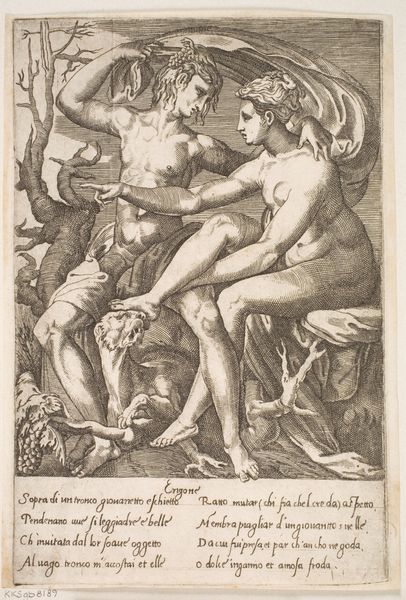
drawing, print, paper, engraving
#
portrait
#
drawing
#
allegory
# print
#
paper
#
11_renaissance
#
nude
#
engraving
Dimensions: 278 × 186 mm (image/sheet, sight); cut within platemark
Copyright: Public Domain
Curator: This engraving, dating from around 1588, is entitled "Venus Receiving Gifts," attributed to Aegidius Sadeler II. I’m immediately struck by its formal balance—the way the figures are arranged, and how the light seems to cascade across the composition. What are your initial impressions? Editor: The composition feels rather dense, a real testament to the engraver’s skill in translating detail. Considering it’s just black ink on paper, it seems abundant with a range of gifts, presumably offered up in homage to Venus, from fruit and birds to elaborate floral arrangements. What was the printing process like? Curator: The Renaissance engraving process involved meticulous work, with the design incised into a metal plate using tools like burins and scrapers. This would then be inked and printed on paper, and given the range of the texture present, I can only begin to image how many prints were made to come to the crisp finish you see on the page. But notice how the stark contrast shapes our perception of depth and volume? Editor: Absolutely, and looking at the social context, consider that the access to these sorts of prints made visual art more widely available and altered its perceived role in society at large. Engravings, even those depicting idealized beauty like Venus, helped popularize artistic styles across different social classes and geographic locations. Curator: That is a fair point. But if we pull ourselves back for a second to look closer, you will see there are subtle asymmetries, from the placement of Venus on her rock to the expressions of each character. This prevents it from becoming too rigid. Look closely, too, and observe the interplay of the bodies, creating a flowing rhythm that directs your gaze throughout. It keeps drawing me back in with something new each time! Editor: A flow I agree with. Given the emphasis on her receiving gifts, I'd be really curious to dig more into where Sadeler fits into the wider system of artistic production during this period—who commissioned the work, who would have purchased or circulated the final prints, and the extent to which Venus became a symbol through mass reproduction. All things, of course, that are nearly impossible to fully understand at this great a distance. Curator: Still, our dialogue illuminates two equally relevant paths of interpretation, the intricate interplay of form and production in artworks like this, even centuries later! Editor: Agreed, uncovering a richer picture of what images like this meant, and still mean, today.
Comments
No comments
Be the first to comment and join the conversation on the ultimate creative platform.
